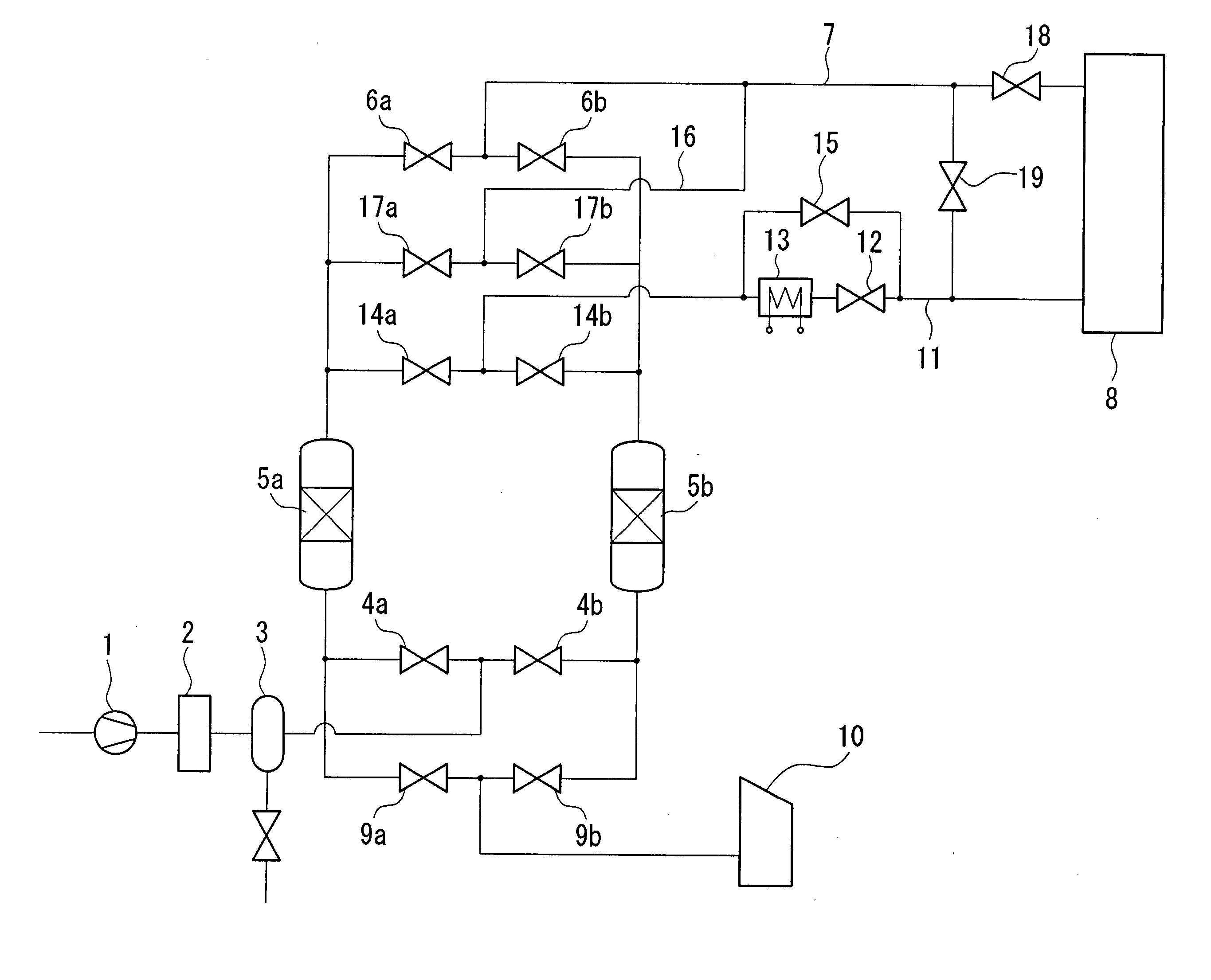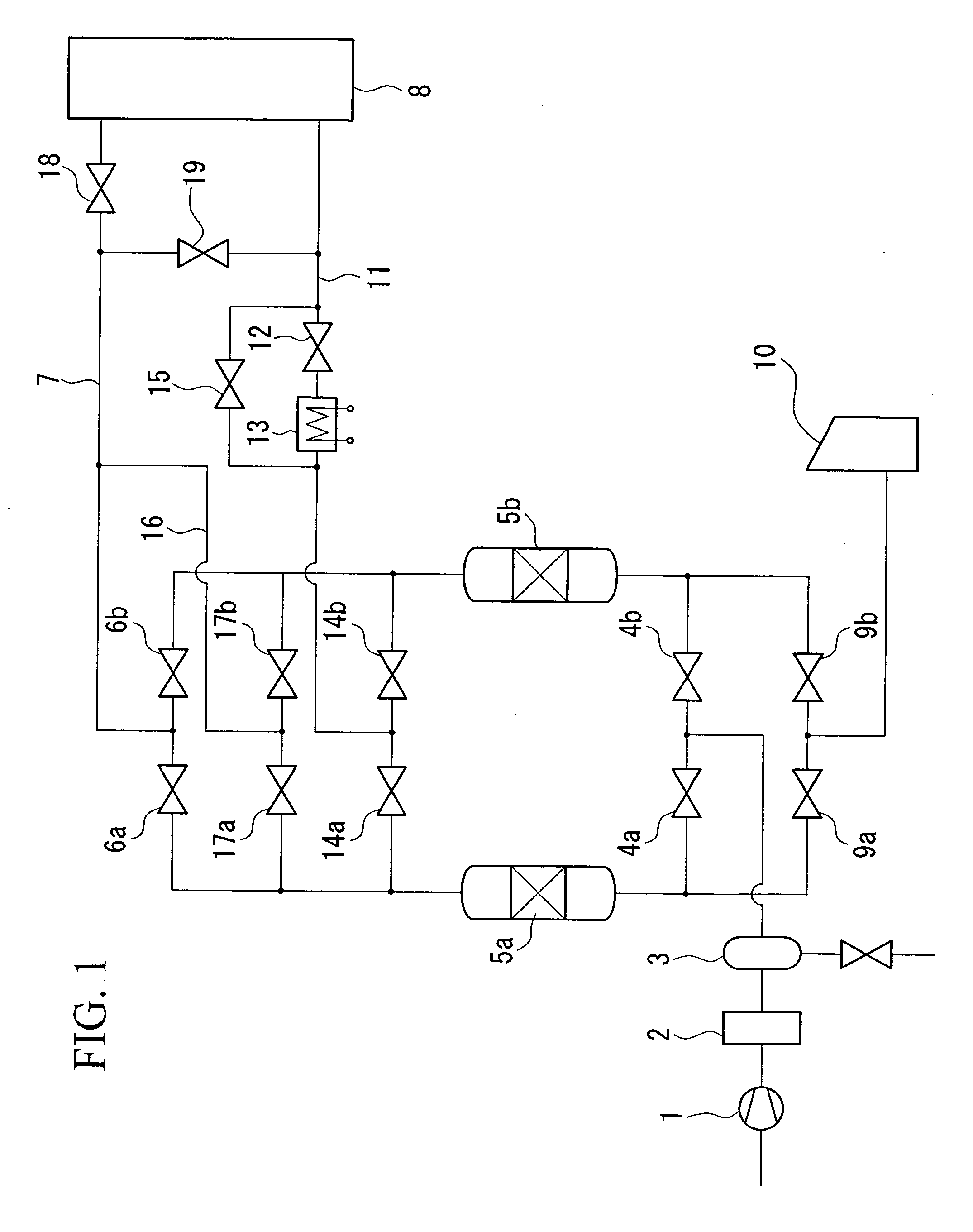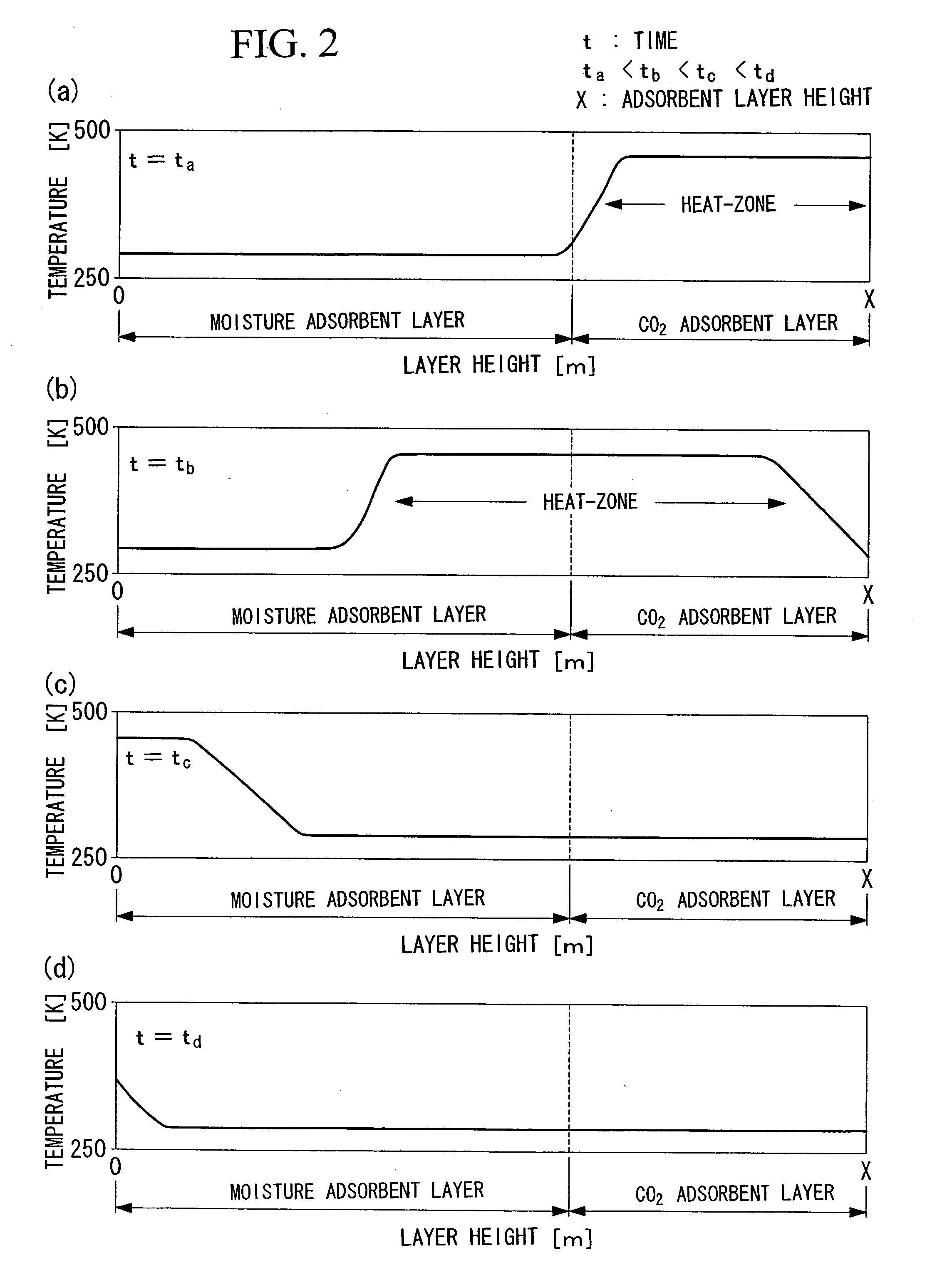Method of restarting feed air purifier
a technology of feed air purifier and rapid restart, which is applied in the direction of liquefaction, lighting and heating apparatus, separation processes, etc., can solve the problems of urgent stoppage of cryogenic air separation plants, urgent stoppage of apparatus, and insufficient regeneration of adsorben
- Summary
- Abstract
- Description
- Claims
- Application Information
AI Technical Summary
Benefits of technology
Problems solved by technology
Method used
Image
Examples
example 1
[0162] In Example 1, the simulation of the first aspect of the present invention was performed by using the cryogenic air separation plant represented by FIG. 1 as a model. The numeral conditions used in the simulation were as follows.
Moisture adsorbent: activated aluminum produced by PROCATALYSE (layer height: 0.88 m)
Carbon dioxide adsorbent: Na-X zeolite produced by W.R. Grace & Co. (layer height: 0.65 m)
Feed air pressure: 620 kPa (absolute pressure)
Feed air temperature: 40° C.
Purge gas ratio (flow rate of purge gas / flow rate of feed air): 40%
Heating gas temperature: 200° C.
Adsorption process time: 120 min
Regeneration process time: 120 min (depressurizing step: 3 min, heating step: 43 min, cooling step: 62 min, pressurizing step: 12 min)
[0163] Under the aforementioned numerical conditions, the temperature change in the adsorption column 5a performing the regeneration process during the steady operation was preliminary calculated. At the purge gas-outflowing part i...
example 2
[0176] In Example 2, the simulation of the first aspect of the present invention was performed while changing the several conditions in Example 1. The numeral conditions used in this simulation were as follows.
Moisture adsorbent: activated aluminum produced by PROCATALYSE (layer height: 0.28 m)
Carbon dioxide adsorbent: Na-X zeolite produced by W.R. Grace & Co. (layer height: 0.32 m)
Feed air pressure: 620 kPa (absolute pressure)
Feed air temperature: 10° C.
Purge gas ratio (flow rate of purge gas / flow rate of feed air): 15%
Heating gas temperature: 150° C.
Adsorption process time: 240 min
Regeneration process time: 240 min (depressurizing step: 6 min, heating step: 86 min, cooling step: 124 min, pressurizing step: 24 min)
[0177] Under the aforementioned conditions, the temperature at the purge gas-outflowing part in the adsorption column 5a performing the regeneration process during the steady operation was calculated, and the result showed that the temperature reached the...
example 3
[0181] In Example 3, the simulation of the second aspect of the present invention was performed by using the cryogenic air separation plant represented by FIG. 1 as a model. The numeral conditions used in this simulation were as follows.
Moisture adsorbent: activated aluminum produced by PROCATALYSE (layer height: 0.88 m)
Carbon dioxide adsorbent: Na-X zeolite produced by W.R. Grace & Co. (layer height: 0.65 m)
Feed air pressure: 620 kPa (absolute pressure)
Feed air temperature: 40° C.
Purge gas ratio (flow rate of purge gas / flow rate of feed air): 40%
Heating gas temperature: 200° C.
Adsorption process time: 120 min
Regeneration process time: 120 min (depressurizing step: 3 min, heating step: 43 min, cooling step: 62 min, pressurizing step: 12 min)
[0182] Under the aforementioned numerical conditions, the time range, in which the restart method of the second aspect of the present invention was applicable, was calculated by using the formula (1).
t1<120 min−0.40×(120 min−12 ...
PUM
| Property | Measurement | Unit |
|---|---|---|
| absolute pressure | aaaaa | aaaaa |
| temperature | aaaaa | aaaaa |
| pressure | aaaaa | aaaaa |
Abstract
Description
Claims
Application Information
 Login to View More
Login to View More - R&D
- Intellectual Property
- Life Sciences
- Materials
- Tech Scout
- Unparalleled Data Quality
- Higher Quality Content
- 60% Fewer Hallucinations
Browse by: Latest US Patents, China's latest patents, Technical Efficacy Thesaurus, Application Domain, Technology Topic, Popular Technical Reports.
© 2025 PatSnap. All rights reserved.Legal|Privacy policy|Modern Slavery Act Transparency Statement|Sitemap|About US| Contact US: help@patsnap.com



